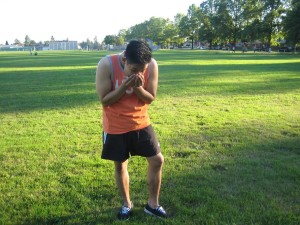Various viruses can cause the common cold with symptoms such as cough, runny nose, headache and sore throat. These viruses are easily spread from one individual to another by the transmission of the droplets. Once an infected individual sneezes or coughs, the droplets can reach as far as 20 feet and survive for several minutes. If an unsuspecting individual breathes in these droplets, he/she can become infected with the common cold.
Always bear in mind that the virus can also spread via contact with the hands, thus touching a phone or door knob can transmit the virus to others who also touch these items. If you want to learn how to manage the symptoms of cold, click here.
Transmission of the cold virus
The virus that enters the nose ends up trapped in the nasal hair and cilia within the nasal passages. The chemical substances in the nasal lining will eliminate some of the particles. On the other hand, some of the virus particles invade the cells that line the rear part of the throat and upper airway. Once the virus starts to reproduce within the cells of the body, hundreds of new virus particles are produced to attack new cells and eventually multiply.

Based on studies conducted, it was discovered that the human rhinovirus can actually miss a step once it produces its protein product. This is simply a shortcut that hastens its ability to make an individual sick right after infection.
Replication
Once the common cold virus continues to reproduce and invade the cells in the body, the temperature will start to increase in an attempt to eliminate the virus, oftentimes resulting to a low-grade fever that might not be noticed. As the effect of the invasion progresses, the individual will start to feel sick.
Some of the viruses mutate by creating minor changes in certain proteins to avoid capture and being destroyed by the antibodies from the immune system. The harshness of colds caused by viruses will depend on the strain and how the immune system fights it.
What are the side effects?
The irritation triggered by the virus particles can lead to sneezing which flushes out some of the virus particles, thus spreading the infection to others. Take note that the blood supply to the lining of the affected nasal passages increases, spreading the white blood cells. The blood vessels become swollen, thus causing the nasal lining to generate fluid which causes runny nose and later on congestion. The cold starts to run its course as the individual attempts to relieve the symptoms with fever medications and cough suppressants.
Immune response
Take note that some of the lymphocytes produce proteins that are known as antibodies that will immobilize the virus particles. The other lymphocytes produce potent chemicals that will get rid of the contaminated cells along with the virus particles within them. The phagocytes will swallow and digest these cells and particles. In a span of a week, the symptoms will start to diminish as the body fights and continues to clear out the remaining virus particles.
